“Vito was in his fifties, but he had four-way sex with goddesses … He held these clay-sculpting classes on Laurel Avenue, teaching rich Beverly Hills dowagers how to sculpt. And that was the Byrds’ rehearsal room. Then Jim Dickson had the idea to put them on at Ciro’s, on the basis that all the freaks would show up and the Byrds would be their Beatles.”
Kim Fowley
Recruits for Vito and Carl’s dance troupe weren’t likely hard to come by, given that, according to Miles, Vito operated “the first crash pad in LA, an open house to countless runaways where everyone was welcome for a night, particularly young women.” By the mid 1960s, the group had expanded into a second communal location in addition to the basement studio at 303 Laurel Avenue: the ubiquitous Log Cabin. According to Jack Boulware, writing in Mojo magazine, architect Robert Byrd and his son built a new guesthouse (aka ‘the treehouse’) on the property in the early 1960s, and “The following year, a communal family of weirdos moved into the cabin and treehouse, centered around two underground hipsters named Vito Paulekas and Carl Franzoni, organizers of freeform dance troupes at clubs along the Sunset Strip.” By 1967, the dancers were splitting “their rent with staff from the hippie publication The Oracle. Retired journalist John Bilby recalls at least 36 people living and partying at the Log Cabin and treehouse, including the band Fraternity of Man. ‘Tim Leary was definitely there, George Harrison and Ravi Shankar were there,’ Bilby says.”
For those who may not necessarily be ‘in the know’ about such things, the Fraternity of Man were best known for the novelty song, “Don’t Bogart Me,” Tim Leary was best known for being a painfully obvious CIA asset, and The Oracle was a San Francisco-based publication with intelligence ties that specialized in pitching psychedelic occultism to impressionable youth.
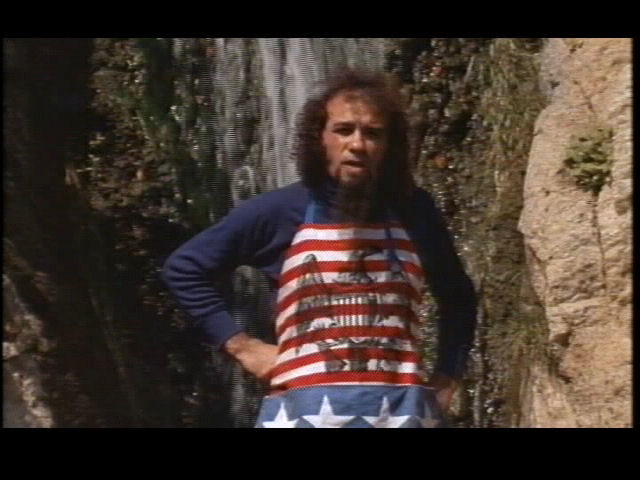
According to Barry Miles, “Franzoni’s commune ended in May 1968,” as that was when The Oracle moved out and our old friend Frank Zappa moved in. The lead Mother “had visited Karl at the log cabin on a previous trip and realized it was perfect for his needs.” And it was an easy move for Frank, since he was already living in the canyon at the home of Pamela Zarubica (aka Suzy Creamcheese) at 8404 Kirkwood Drive, where Zappa had met his new wife, Gail, and where Gail’s old kindergarten pal, James Douglas Morrison, was known to occasionally pass the time. Ms. Zarubica/Creamcheese was yet another member of Vito’s dance troupe.
As multiple sources remember it, Miles is mistaken in his contention that Franzoni’s commune came to an end; Frank Zappa took over as ringmaster, to be sure, but Franzoni and all his cohorts stayed on. Carl had a room in the basement, where he was known to bowl, usually naked and intoxicated, in the middle of the night. The doomed Christine Frka had a room down there as well, as did other future GTOs. Various other members of the dance troupe occupied other nooks and crannies in both the main house and the guesthouse/treehouse. Indeed, as Miles noted correctly, the Freak dancers became so closely associated with the Mothers of Invention that “they got dubbed as ‘the Mothers Auxiliary’ and Karl Franzoni, in particular, was included in a lot of group photographs.”

And that, my friends, is the story of Vito’s Freakers – or at least a sanitized version. Because there is, as it turns out, a very dark underbelly to this story. And much of it is centered around that angelic hippie child that the readers of Life magazine met in 1966, and who we now must sadly add to the Laurel Canyon Death List. For young Godot Paulekas, you see, never made it past the age of three (by most accounts). The specifics of the tragedy are all but impossible to determine, unfortunately, as there is little agreement in the various accounts of the event. Left unclear is exactly how the child died, when the tragedy occurred, and what age the boy was.
According to Barry Miles, “Vito and Szou’s three-year-old son Godo had fallen through a trapdoor on the roof of the building and died.” Michael Walker tells of a “two or three” year old Godot “fall[ing] to his death from a scaffold at the studio.” An article in the San Francisco Weekly had it as “a 5-year-old boy” who died when he “fell through a skylight.” Super-groupie and former Freak dancer Pamela DesBarres agreed with the skylight scenario, but not the age: “Vito’s exquisite little puppet child, Godot, fell through a skylight during a wacky photo session on the roof and died at age three-and-a-half.” Alban Pfisterer of the band Love recalled a much darker scenario: “[Vito] got married, had a baby, gave it acid, and it fell off the roof and died.”
When Robert Carl Cohen recently digitally remastered his notorious Mondo Hollywood for DVD release, he added postscripts for all the famous and infamous people who were featured in his film. For “Godo” Paulekas, he inserted the following caption: “Died age 2 – victim of medical malpractice.” Thus we now have a further muddying of the waters. Since Cohen’s claim though is so clearly at odds with every other account of the incident, and since he was quite close to Vito and thus inclined to cast his friend in the best possible light, we can probably safely disregard Cohen’s belated postscript.

The details of the incident that can be ascertained are, to put it mildly, rather disturbing. We know, for example, that a musician and writer named Raphael told writer Michael Walker that, before the child’s death, he had been present one evening at Vito’s place when Godot was brought out: “They passed that little boy around, naked, in a circle with their mouths. That was their thing about ‘introducing him to sensuality.’” We also know that Vito and Szou had a rather odd reaction to the death of their first-born son and only child, as recounted by Ms. DesBarres: “I was beside myself with sorrow, but Vito and Szou insisted on continuing our plans for the evening. We went out dancing, and when people asked where little Godot was, Vito said, ‘He died today.’ It was weird, really weird.”
That it was, but perhaps even weirder is the full text of the quote from the San Francisco Weekly that I earlier presented you with an edited version of: “[Kenneth Anger’s] first candidate to play Lucifer, a 5-year-old boy whose hippie parents had been fixtures on the Los Angeles counterculture scene, fell through a skylight to his death. By 1967, Anger had relocated to San Francisco and was searching for a new Lucifer.” As many readers may be aware, he soon found his new Lucifer in the form of Mansonite and former Grass Roots guitarist Bobby “Cupid” Beausoleil.
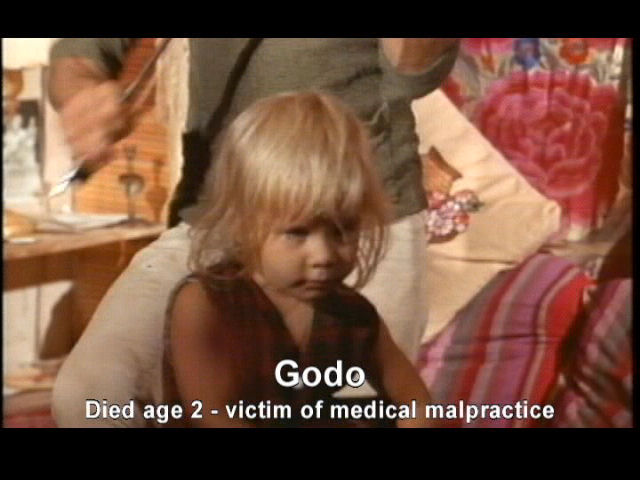
And so it was that the soon-to-be convicted murderer replaced the cherubic hippie child as the face of Lucifer. But what was it, one wonders, that drew Anger’s twisted eye to the young boy? And how close a relationship did Anger have with Paulekas and Franzoni? And most importantly, how did Godot Paulekas really die? We will likely never know for sure, but let’s just quickly review some of the factors that might come into play when searching for a solution to this mystery:
- The young boy was reportedly subjected to pedophilic treatment by his parents and others.
- The boy’s parents displayed a truly chilling indifference to the child’s death.
- Kenneth Anger had expressed an interest in filming the boy.
- Pamela DesBarres contends that the toddler died during a “wacky photo session.”
- Alban Pfisterer has claimed that the child was drugged.
- Bobby Beausoleil has said that some of Anger’s film projects were for private collectors: “every once in a while he’d do a little thing that wouldn’t be for distribution.”
- Finally, according to biographer Bill Landis, Kenneth Anger was at one time investigated by the police on suspicion that he had been producing snuff flicks.
You all will have to draw your own conclusions on this one. As a responsible journalist, I obviously cannot indulge in any reckless speculation here, and I think we can all agree that I have not tried to lead you in any specific direction, but have merely laid the facts out on the table for your review. Moving on then …
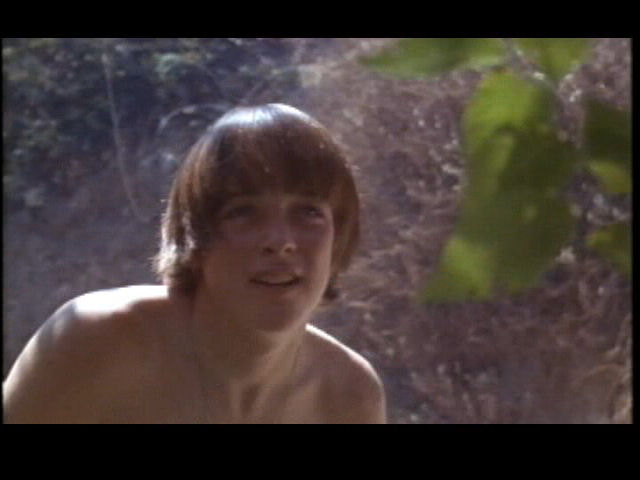
Pamela DesBarres shed further light on the dark edges of the Freak troupe with this description of a scene that Vito had staged one evening in his studio: “two tenderly young girls were tonguing each other … everyone was silently observing the scene as if it were part of their necessary training by the headmaster, Vito … One of the girls on the four-poster was only twelve years old, and a few months later Vito was deported to Tahiti for this very situation, and many more just like it.”
It was actually Haiti that Vito appears to have fled to, and then to Jamaica (which at the time had no extradition treaty with the United States), accompanied by his wife Szou and their new baby daughter Groovee Nipple (or possibly Gruvi Nipple; does anyone really care which is the proper spelling?) According to Miles, this occurred in December of 1968, though other accounts vary. Carl Franzoni, meanwhile, became embroiled in some unspecified legal troubles of his own and went into hiding, resurfacing in Canada by some reports. At around that same time, Frank Zappa moved on to yet another location in Laurel Canyon, a high-security home on Woodrow Wilson Drive.
Also at around that same time, according to author Ed Sanders, the Manson Family came calling at the Log Cabin: “One former Manson family associate claims that a group of four to six family members lived on Laurel Canyon Boulevard in the log cabin house once owned by cowboy-actor Tom Mix. They lived there for a few weeks, in late 1968, in a cave-like hollow in back of the residence.” According to Franzoni, Manson also came calling at the Vito Clay studio on Laurel Avenue: “Applebaum took over Vito’s place when Vito vacated at Beverly and Laurel. So he inherited all the people that came after that … he was the beginning of the Manson clan. Manson came there because he had heard about Vito but Vito was gone.”
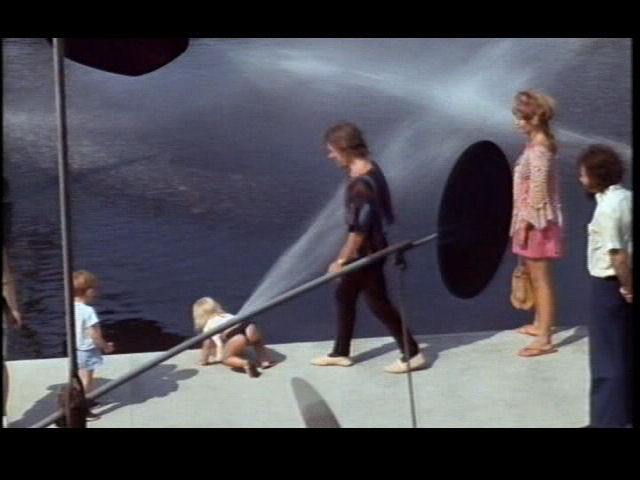
It does not appear as though Vito was actually deported, by the way, but rather that he fled the country in a very Mike Ruppertian fashion to avoid likely prosecution. In any event, it makes perfect sense, in retrospect, that Charlie Manson and his Family came calling just as Vito fled the scene, and that a Mansonite replaced the Freak child as the embodiment of Lucifer. For the truth, you see, is that, in many significant ways, Charles Manson was little more than a younger version of Vito Paulekas. Consider, if you will, all of the following Mansonesque qualities that Vito (and to some extent, Carl) seemed to share:
- Vito appears to have spent a good portion of his younger years in prisons and reform schools, as did, as we all know, Charles Milles Manson.
- Vito considered himself to be a gifted artist and poet, as did our old friend Charlie Manson.
- Vito, according to Miles, “was something of a guru,” as was, quite obviously, Chuck Manson.
- Vito surrounded himself with a flock of very young (often underage) women, as did Manson.
- Vito was considerably older than his followers, and so too was Charlie.
- When Vito addressed his flock, they listened with rapt attention as though they were being delivered the word of God, as was true with Charlie as well.
- Carl Franzoni was known to wear a black cape and refer to himself as “Captain Fuck,” while Manson was also partial to black capes and declared himself to be “the God of Fuck.”
- Vito is said to have had a virtually insatiable libido, as did, of course, Chuck Manson.
- Vito’s flock adopted nicknames to aid in the depersonalization process, as did Charlie’s.
- Vito’s troupe included a Beverly Hills hairstylist named Sheldon Jaman, while Charlie’s included a Beverly Hills hairpiece stylist named Charles Watson.
- Vito believed in introducing children to sexuality at a very young age, while in the Manson Family, as Sanders has noted, “Infant sexuality was encouraged.”
- Vito apparently liked to stage live sex shows for his followers, usually involving underage participants, which was also a specialty of Charles Milles Manson.
- Finally, Vito encouraged his followers to drug themselves while he himself largely abstained, thus enabling him to at all times maintain control, while Manson limited his own drug intake for the very same reason.
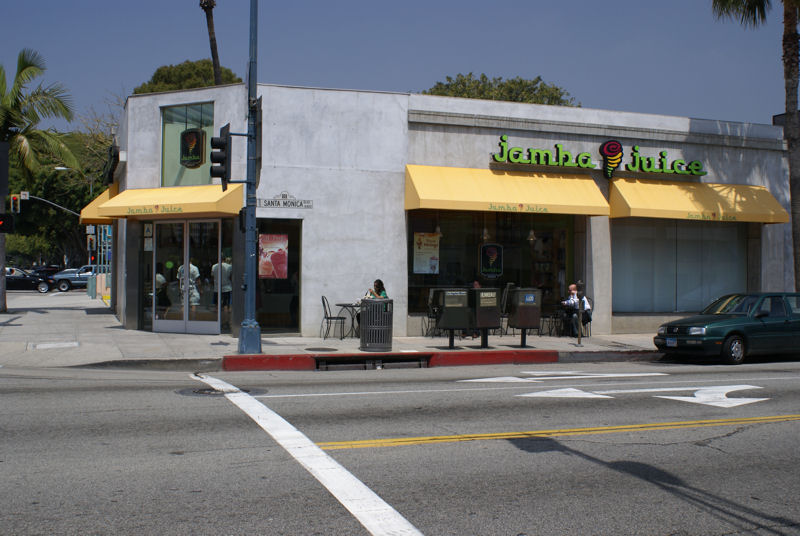
Franzoni and Manson were not, by the way, the only folks on the Laurel Canyon/Sunset Strip scene who developed a fondness for black capes in the latter half of the 1960s. As Michael Walker noted in Laurel Canyon, during that same period of time David Crosby had “taken to wearing an Oscar Wilde/Frank Lloyd Wright-ish cape wherever he went.”
In unrelated news, Ed Sanders notes in The Family that, “Around March 10, 1968, a convoy of seven Process automobiles containing thirty people and fourteen Alsatian dogs journeyed toward Los Angeles.” Vincent Bugliosi added, in his best-selling Helter Skelter, that in “1968 and 1969, The Process launched a major recruiting drive in the United States. They were in Los Angeles in May and June of 1968 and for at least several months in the fall of 1969.” The Processians, it should be noted, were instantly recognizable on the streets of LA due to the fact that they had a curious habit of donning black capes wherever they went.
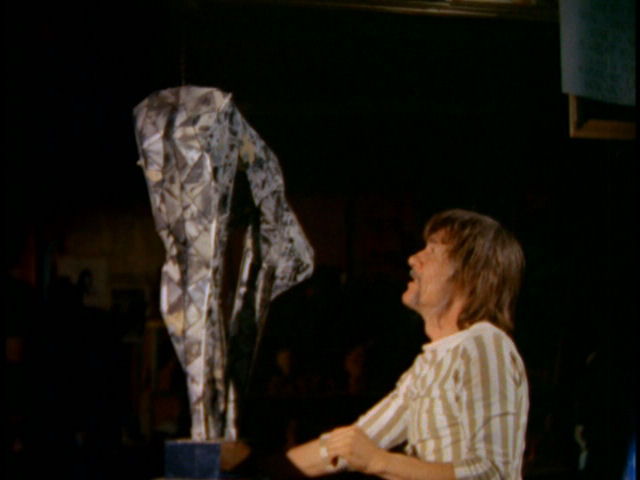
In other news, it appears as though Frank Zappa also displayed some of the same less-than-admirable qualities shared by Manson and Paulekas. As DesBarres observed, “Vito was just like Frank, he never got high either. They were both ringmasters who always wanted to be in control.” And as Barry Miles noted in his Zappa biography, Frank’s daughter Moon “recalls men with straggling beards, body odour and bad posture who crouched naked near her playthings …” Also, the “Zappa children watched porn with their parents and were encouraged in their own sexuality as soon as they reached puberty. When they became teenagers, Gail insisted they shower with their overnight guests in order to conserve water.” Because, you know, apparently the Zappas were having a hard time paying their water bill.
By the early 1970s, Vito Paulekas had resurfaced up north in Cotati, California, with Carl Franzoni once again at his side. The two were, by all accounts, treated like rock stars in the funky little town, and they are to this day proudly and prominently featured on the city’s official website. By some accounts, Vito even served as mayor of the town, with Franzoni assisting as his Director of Parks and Recreation. Paulekas also taught classes at Sonoma State College, presumably in the art department. Szou eventually split from Vito and went to work for an attorney, leaving the hippie life (and hopefully the “Z” in her name) behind. Franzoni, meanwhile, turned up now and then on that early version of America’s Got Talent known as The Gong Show (apparently as one of the ‘Worm Dancers’).
The Gong Show, of course, was the brainchild of Chuck Barris, who famously claimed that during the days when he appeared to be working as a mild-mannered game show producer, he was actually on the payroll of the CIA, and that while he was ostensibly serving as a chaperone to the couples who had won trips on The Dating Game, what he was really doing was carrying out assassinations. Kind of like, I guess you could say, that Harry Houdini guy. One reader, by the way, insists that “Chucky Baby” was at one time a resident of – guess where? – Laurel Canyon (though I have not been able to confirm that).

Anyway, during those same 1970s, “The cabin and treehouse scene,” according to Jack Boulware, “grew creepy.” Actually, it had always been pretty creepy, it likely just became a little more openly creepy. Eric Burden of the Animals moved in after Zappa vacated and the property continued to be communally occupied. In fact, it appears to have remained something of a commune throughout the 1970s, quite possibly right up until the time that it burned to the ground on October 31, 1981. Who paid the rent is anybody’s guess – as is why such a prestigious property seems to have been made available for dirt cheap to pretty much any “communal family of weirdos” who wanted to move in.
Vito Paulekas and Carl Franzoni appear to have remained in northern California throughout the 1980s and into the 1990s. Franzoni was still milling about the area as recently as 2002. In February of this year, the aging Freak, now reportedly 74, rode along on a tour of 1960s hotspots offered by a local tour company and delighted the crowd by reenacting his distinctive dance style in front of Vito’s former studio. The tour operator billed Franzoni as “the King of the Freaks,” a title formerly held by his mentor, Vito Paulekas. The original king, alas, had died in October of 1992. His memorial service was held, appropriately enough, on October 31, 1992.
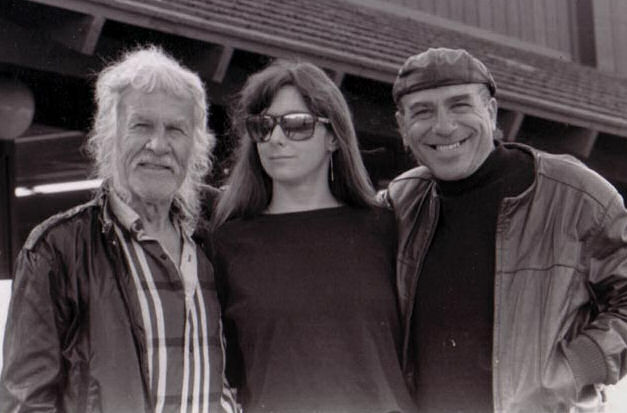
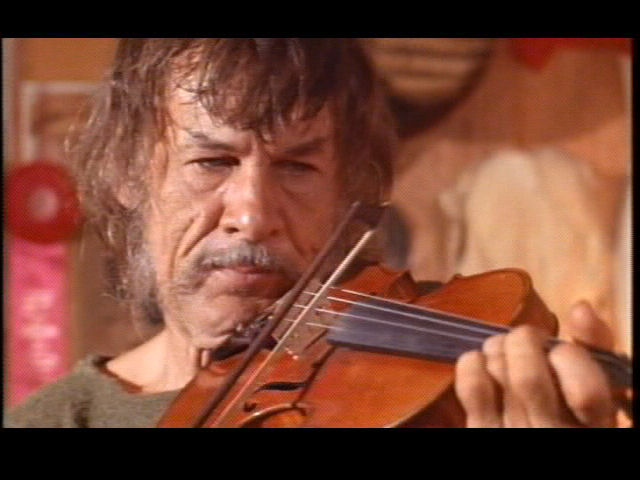
More images of Paulekas and Franzoni can be found at the following locations:
http://ci.cotati.ca.us/sections/about/history5.cfm (“Popup Exhibits” at the bottom of the page)
To Be Continued …

It’s all very interesting reading and all very bizarre to say the least.
Jesus Christ, how did they manage to get away with killing that baby?
You gotta wonder just WHAT really happened to Sharon Tate’s baby. LAPD and Noguchi lied about so much with that case….
see, now the world makes much more sense to me
satan is real
wow ..so theatrical (rolls eyes)
these kind of limited hangouts just blow more covers, my learned friend –thank you for confirming my suspicions about Pauleekas, Franzoni, Manson, Zappa, Anger and the rest of these dancing power clowns* ..you have the gall to call out the CIA on several fronts and then disingenuously ask how the rent got paid (let me guess, the same hoodwinking foot soldiers that pay you to misdirect wildly ?) ..thanks for outing the Oracle and Barry Miles btw–I knew about the Oracle and its “sister” publications (IT, Oz, Berkeley Barb, Village Voice etc ad nauseam) and Sir Barry has been outed on many fronts already
*you can relax Amanda, I’m pretty sure nobody got killed in this overblown street farce
I was one of the girls that hung out at Vito and Suze’s place, I knew Carl Franzoni, slept on their couch occasionally – I was aware of the goings on because it was all out there, they admitted it – I didn’t like Vito much, he gave me the creeps, I was never involved in the sexual escapades because it wasn’t my thing, but they freely admitted everything they were doing, Vito stating he and Suze both gave the toddler Godot head. I was disgusted but didn’t say anything. I was dating Bryan McLean at the time, who was also living upstairs, and I remember telling him I thought they were ‘crazy’ and didn’t think it was right. Carl Franzoni told me personally that Godot had fallen through a skylight, but then he tried to blame the hospital – he was the one who kept claiming it was medical malpractice – I didn’t think that at all, I knew Carl was deflecting, didn’t buy it, and I backed away from all of them at that point. They were misguided parents, and Vito was a pedophilic sexual defiant with no conscience. I do remember he did not indulge in smoking weed, while the rest did, including Sue. Perhaps he was aware I didn’t approve of him because he never once came onto me, thankfully – and no, it wasn’t because I wasn’t cute, I was quite a dish, actually, I just think he knew I got his number. (FYI, my name was not Iris back in the day, I changed it.) I’ve got lots more stories, though!